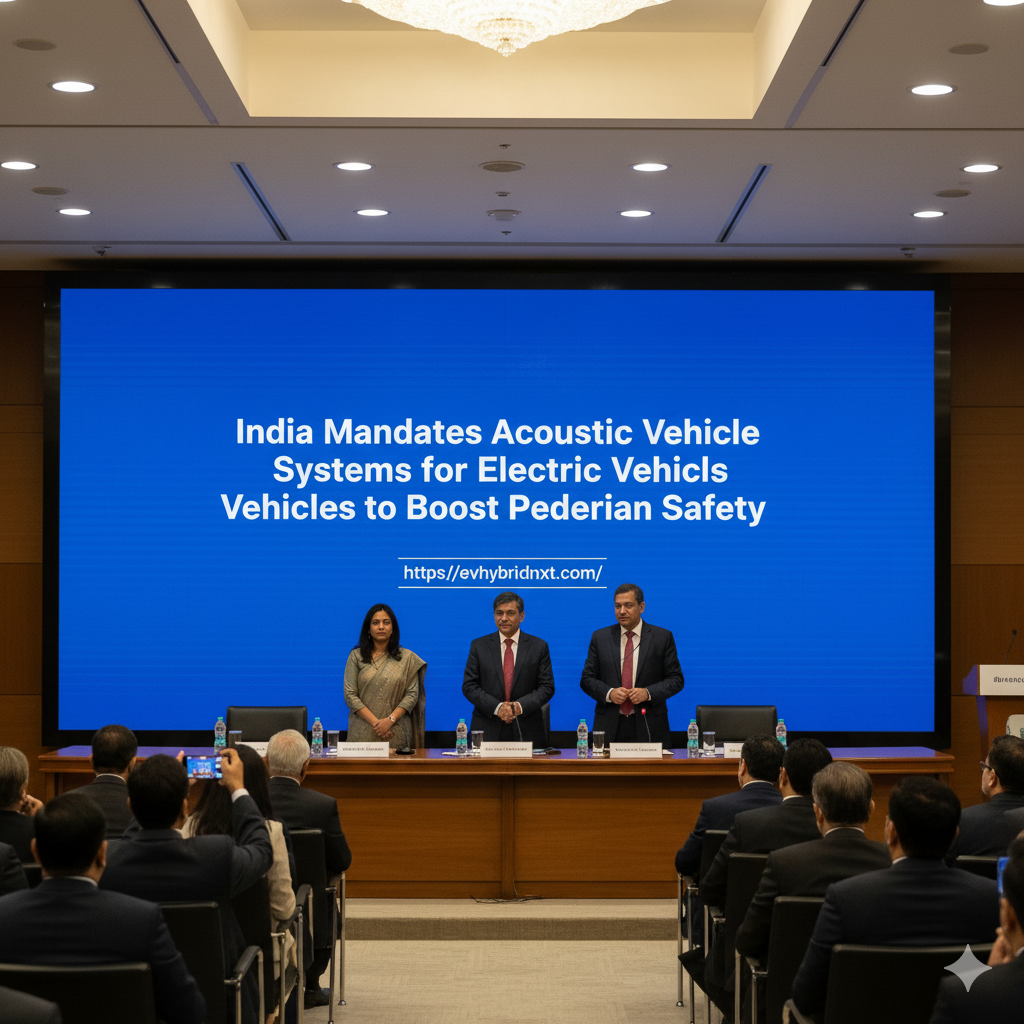In a proactive move to address the silent menace of electric vehicles on Indian roads, the Ministry of Road Transport and Highways (MoRTH) has issued a draft notification amending the Central Motor Vehicles Rules, making Acoustic Vehicle Alerting Systems (AVAS) mandatory for all new electrified vehicles starting October 2026. This regulation targets both private and commercial EVs, aiming to prevent accidents by ensuring these whisper-quiet machines emit audible warnings for pedestrians, cyclists, and other vulnerable road users.
The draft, released on Saturday, specifies: “Provided also that, on and after 1st October 2026 in case of new models and 1st October 2027 in case of existing models, electrified vehicles of category M and N shall be fitted with Acoustic Vehicle Alerting System (AVAS) meeting requirements with regard to audibility as specified in AIS-173, as amended from time to time.” Category M vehicles include passenger carriers like cars and buses, while Category N covers goods vehicles such as trucks and vans—encompassing a broad swath of the burgeoning EV fleet.
The impetus for this mandate stems from growing safety concerns over the near-silent operation of EVs at low speeds, where traditional internal combustion engine (ICE) vehicles provide natural auditory cues. EVs, lacking engine rumble, have been linked to heightened risks for pedestrians, particularly in densely populated urban areas like Mumbai. A 2021 study in the Mumbai Metropolitan Region revealed that 86% of surveyed pedestrians found it difficult to hear EVs passing by, with 56% deeming them more dangerous than ICE vehicles due to their quietness. Alarmingly, 33% of respondents reported personal involvement in accidents, and 17% had witnessed pedestrian collisions at traffic signals involving EVs. Globally, pedestrians account for 22% of traffic fatalities, a statistic that underscores the urgency in India, where road accidents claim over 150,000 lives annually, including a significant 20% pedestrian share.
AVAS addresses this gap by automatically generating low-frequency sounds—mimicking a subtle engine hum—that intensify with vehicle speed, activating primarily below 20 km/h and during reverse maneuvers. This artificial noise, compliant with the Automotive Industry Standards (AIS-173), ensures audibility without compromising the eco-friendly appeal of EVs. The system has proven effective abroad, where it’s already compulsory in the European Union, Japan, and the United States, correlating with reduced low-speed pedestrian incidents.
India’s EV ecosystem is exploding, with sales surging 50% year-on-year to over 1.5 million units in 2024, fueled by schemes like FAME-II and PM E-Drive. Yet, safety lags behind adoption: Data from the eDAR portal indicates 19,797 accidents involving EVs from 2022 to 2024, with fatalities climbing from 1,518 in 2022 to 1,947 in 2024—a stark reminder of the need for holistic regulations. By phasing in AVAS, MoRTH not only aligns India with global best practices but also safeguards its push toward sustainable mobility, projected to see EVs constitute 30% of vehicle sales by 2030.



